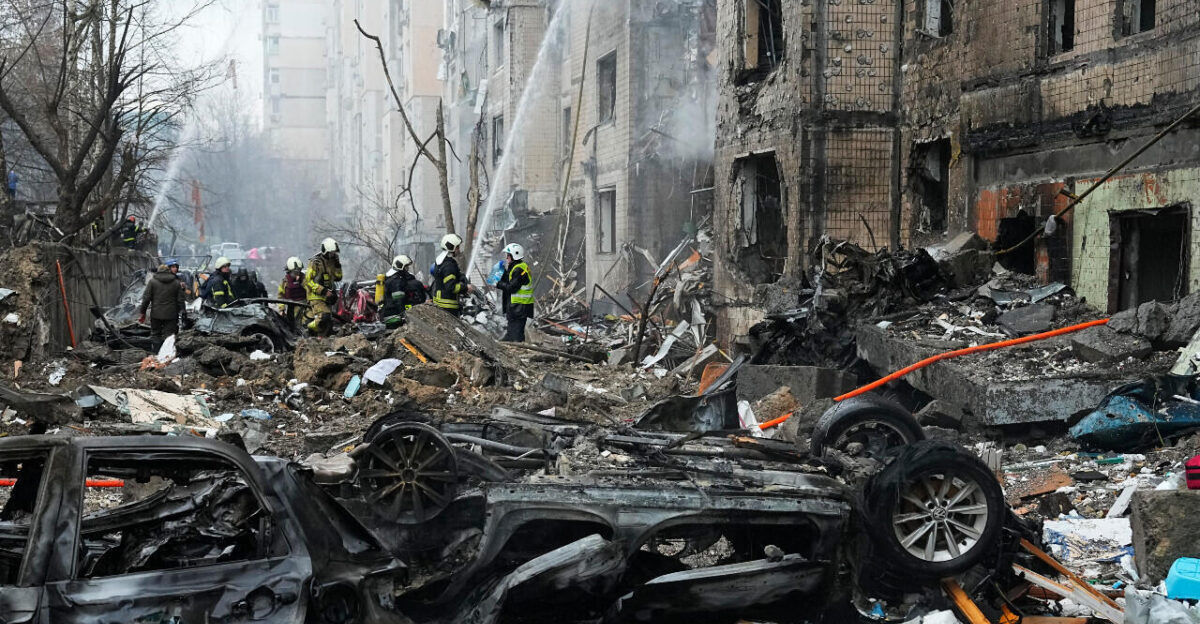
In early November 2025, Ukraine was thrust into a new phase of crisis as Russia launched its largest-ever assault on the nation’s energy infrastructure. Overnight, a coordinated barrage of more than 450 drones and 45 missiles struck key power and gas facilities across multiple regions, including Kyiv, Kharkiv, Dnipro, Poltava, and Kirovohrad. The attack forced all three of Centrenergo’s state thermal plants offline, reducing the country’s electricity generation to zero and leaving millions without power or heat as winter’s chill set in.
The scale and precision of the strike marked a turning point in the ongoing conflict, targeting both thermal and gas sectors simultaneously for the first time. As temperatures dropped, the blackout quickly escalated from a technical emergency to a humanitarian disaster, with emergency crews scrambling to restore basic services amid freezing conditions.
A Nation Under Siege: The Human Toll

The immediate aftermath of the attack was felt most acutely by Ukraine’s energy workers and the millions who rely on their efforts. More than 6,700 Centrenergo employees, including engineers and repair crews, lost operational work overnight. Many shifted instantly to emergency repairs, working under relentless physical and psychological pressure. Since the start of the full-scale invasion in 2022, DTEK, another major energy company, has endured over 210 attacks and lost 141 employees, underscoring the persistent danger faced by those keeping the lights on.
For civilians, the blackout brought rolling power cuts and heating shortages to an estimated 3–5 million people dependent on Centrenergo. Residents of high-rise buildings and frontline communities were especially vulnerable, with many facing the prospect of enduring winter in unheated homes. Across the country, tens of millions more experienced intermittent power and water outages, compounding the crisis and raising fears of a broader humanitarian emergency.
Economic Shockwaves and Disrupted Daily Life

The energy strike’s impact rippled quickly through Ukraine’s economy. Small businesses, manufacturers, and service providers faced immediate losses as power outages forced closures and disrupted supply chains. In Kyiv, cafés and restaurants reported a 27% drop in revenue, while major steel plants were forced to halt daytime operations. Damaged roads and bridges further delayed deliveries, threatening both livelihoods and the nation’s industrial output.
Essential services struggled to adapt. By November 9, only 67% of housing and 84% of social facilities had restored heating. Thirteen regions endured hourly blackouts, forcing schools and hospitals to ration electricity. Students and patients faced freezing conditions, while repair teams raced against time and weather to restore critical infrastructure before the cold deepened.
Government Response and International Support
President Volodymyr Zelenskyy acknowledged the scale of the emergency, noting that repair crews were working around the clock in most regions. Authorities ramped up efforts to stabilize the grid, turning to neighboring countries for help. Imports of electricity from Hungary, Poland, and Romania surged, but the question remained whether international support could keep pace with the frequency and intensity of Russian attacks.
Ukrenergo, Ukraine’s national grid operator, described the damage as unprecedented, with half of Naftogaz’s gas production knocked offline. The repeated destruction of recently restored facilities—some rebuilt less than a month before—highlighted the challenge of maintaining energy infrastructure under constant threat. The financial toll was staggering: rebuilding a single thermal plant can cost between $200 million and $500 million, and Ukraine’s total infrastructure losses since the war’s onset have surpassed $84 billion.
Winter as a Weapon: The Broader Stakes

Russia’s strategy of “weaponizing winter” aims to maximize civilian hardship and erode morale as temperatures plunge. Forecasts predict lows of -12°C or colder in the coming months, raising the risk of hypothermia and displacement for vulnerable populations. Humanitarian organizations warned of a “perfect storm,” with many Ukrainians now living in cold, dark homes patched with plywood instead of windows.
The methodical use of ballistic and cruise missiles, Shahed-type drones, and possibly hypersonic weapons in simultaneous strikes across five regions marked a new peak in energy warfare. Repair teams, already stretched thin, faced spare-part shortages and the constant threat of renewed attacks. Imported electricity rose by 141% after previous strikes, but the scale of damage threatened to overwhelm both national and international response capacities.
Looking Ahead: Resilience Amid Uncertainty

The November blackout has reshaped Ukraine’s winter outlook, threatening widespread displacement, supply chain breakdowns, and prolonged humanitarian need. Emergency measures are underway, but the nation’s vulnerability remains high as the conflict enters another harsh season. The speed and effectiveness of reconstruction, the durability of international support, and the resilience of Ukraine’s people will determine how the country weathers this unprecedented energy war—and whether it can emerge with its infrastructure and social fabric intact.